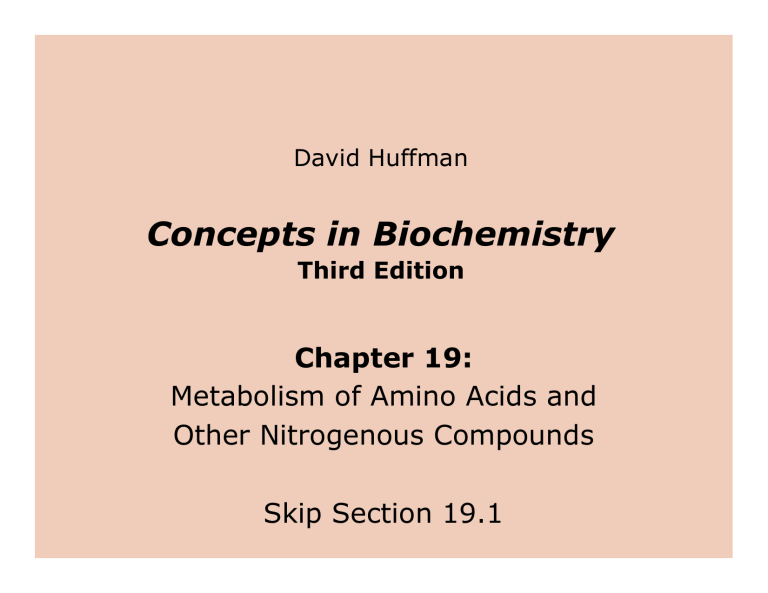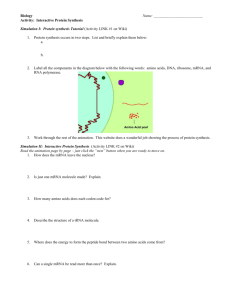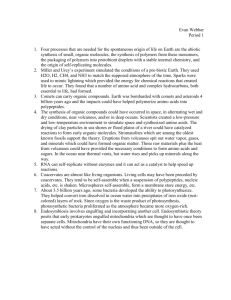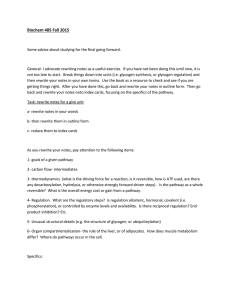Concepts in Biochemistry Chapter 19: Metabolism of Amino Acids and Other Nitrogenous Compounds

David Huffman
Concepts in Biochemistry
Third Edition
Chapter 19:
Metabolism of Amino Acids and
Other Nitrogenous Compounds
Skip Section 19.1
Synthesis of Glutamine. Important in nitrogen assimilation.
Not required to know. Only in plants.
Synthesis of Glutamate. Important in nitrogen assimilation.
We readily make the nonessential amino acids.
Synthesis of Alanine from Pyruvate. Very important!
Note that Glutamate and !
-ketoglutarate are involved in most transamination reactions.
The synthesis of alanine, aspartate, glutamate, asparagine, and glutamine.
Serine synthesis. 3-phosphoglycerate is product of step 7 of glycolysis
Glycine is made from Serine.
SAM is a versatile methylating agent.
Breakdown of amino acids.
Peptidases -- enzymes that cut up proteins; also called proteases.
Transaminantion -- first step in breakdown of most amino acids.
Amino acids are categorized as ketogenic or gluconegic or both.
Know what cause Maple syrup urine disease.
Breakdown of Phenylalanine.
Assimilation of Nitrogen via Glutamate and release as ammonium.
Need to remove ammonium from the cell. How?
Know the urea cycle inside and out!
Source of nitrogens for urea cycle
Know!
Synthesis of Heme from Succinyl-CoA
Epinephrine and norepinephrine are made from Phe
NO (nitric oxide) causes vasodilation
Amino acids (and other molecules) are precursors for purines and pyrimidines.
Pyrimidine Synthesis
Purine Synthesis
Salvage Pathway for Biosynthesis of purine and pyrimidine nucleotides.
• PRPP reacts with a base to form a nucleotide with one phosphate.
Ribonucleotide reductase converts RNA to DNA.
Excessive purine degradation leads to excess urate salts -causes gout.




